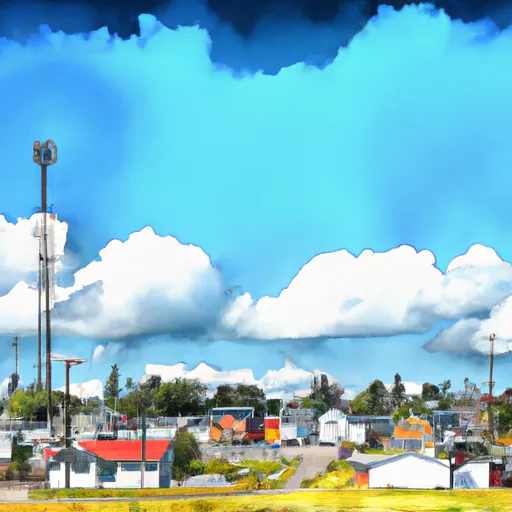-
 Snoflo Premium
Snoflo Premium
Get unlimited access to all our content
With no Ad interruptions! - Start Your Free Trial Login with existing account
Redlake
Eden Index
Climate
4.7
•
Recreation
2.0
•
Community
•
Safeguard
2.6/10

Redlake, Minnesota is a small community located in Beltrami County in the northern part of the state. The region experiences a continental climate with long, cold winters and warm summers. Average temperatures range from around 10°F (-12°C) in January to 73°F (23°C) in July. The area receives moderate to heavy snowfall during the winter months.
Redlake is surrounded by numerous lakes and rivers, making it a great destination for water-based recreational activities. The primary hydrology constituent in the area is Red Lake, which is one of the largest freshwater lakes in the United States. This lake offers excellent fishing opportunities, particularly for walleye and northern pike, attracting fishing enthusiasts from far and wide.
In addition to fishing, Redlake and its surrounding areas provide various outdoor recreation opportunities. Visitors can enjoy boating, kayaking, and canoeing on the lakes and rivers. The region also offers hiking and biking trails, allowing nature lovers to explore the beautiful landscapes and observe the local flora and fauna.
Overall, Redlake, Minnesota, with its diverse hydrology constituents and outdoor recreation opportunities, is an ideal destination for fishing enthusiasts and nature lovers seeking an escape to the great outdoors.
What is the Eden Index?
The Snoflo Eden Index serves as a comprehensive rating system for regions, evaluating their desirability through a holistic assessment of climate health, outdoor recreation opportunities, and natural disaster risk, acknowledging the profound impact of these factors on livability and well-being.
Climate Health Indicator (CHI): 4.7
Redlake receives approximately
607mm of rain per year,
with humidity levels near 82%
and air temperatures averaging around
4°C.
Redlake has a plant hardyness factor of
3, meaning
plants and agriculture in this region thrive during a short period during spring and early summer. Most
plants will die off during the colder winter months.
By considering the ideal temperature range, reliable water supplies, clean air, and stable seasonal rain or snowpacks, the Climate Health Indicator (CHI) underscores the significance of a healthy climate as the foundation for quality living.
A healthy climate is paramount for ensuring a high quality of life and livability in a region, fostering both physical well-being and environmental harmony. This can be characterized by ideal temperatures, reliable access to water supplies, clean air, and consistent seasonal rain or snowpacks.
Weather Forecast
Streamflow Conditions
Lower Red
Area Rivers
Lower Red
Snowpack Depths
Lower Red
Reservoir Storage Capacity
Lower Red
Groundwater Levels
Recreational Opportunity Index (ROI): 2.0
The Recreational Opportunity Index (ROI) recognizes the value of outdoor recreational options, such as parks, hiking trails, camping sites, and fishing spots, while acknowledging that climate plays a pivotal role in ensuring the comfort and consistency of these experiences.
Access to outdoor recreational opportunities, encompassing activities such as parks, hiking, camping, and fishing, is crucial for overall well-being, and the climate plays a pivotal role in enabling and enhancing these experiences, ensuring that individuals can engage in nature-based activities comfortably and consistently.
Camping Areas
| Campground | Campsites | Reservations | Toilets | Showers | Elevation |
|---|---|---|---|---|---|
| Mantrap - Paul Bunyan State Forest | 40 | 1,527 ft | |||
| Warroad City Campground | 182 | 1,076 ft | |||
| Faunce - Beltrami Island SF | 6 | 1,295 ft | |||
| Birch Point Provincial Park | 26 | 1,063 ft | |||
| Falcon Lake Lakeshore - Whiteshell Provincial Park | 153 | 1,086 ft | |||
| Falcon Lake Beach - Whiteshell Provincial Park | 234 | 1,076 ft | |||
| Caddy Lake - Whiteshell Provincial Park | 26 | 1,069 ft | |||
| West Hawk Lake - Whiteshell Provincial Park | 122 | 1,140 ft | |||
| Williams City Park | 25 | 1,158 ft | |||
| Itasca State Park | 225 | 1,485 ft |
Nearby Fishing
Catastrophe Safeguard Index (CSI):
The Catastrophe Safeguard Index (CSI) recognizes that natural disaster risk, encompassing floods, fires, hurricanes, and tornadoes, can drastically affect safety and the overall appeal of an area.
The level of natural disaster risk in a region significantly affects safety and the overall livability, with climate change amplifying these risks by potentially increasing the frequency and intensity of events like floods, fires, hurricanes, and tornadoes, thereby posing substantial challenges to community resilience and well-being.
Community Resilience Indicator (CRI):
The Community Resilience Indicator (CRI) recognizes that education, healthcare, and socioeconomics are crucial to the well-being of a region. The CRI acknowledges the profound impact of these elements on residents' overall quality of life. By evaluating educational resources, healthcare accessibility, and economic inclusivity, the index captures the essential aspects that contribute to a thriving community, fostering resident satisfaction, equity, and social cohesion.

